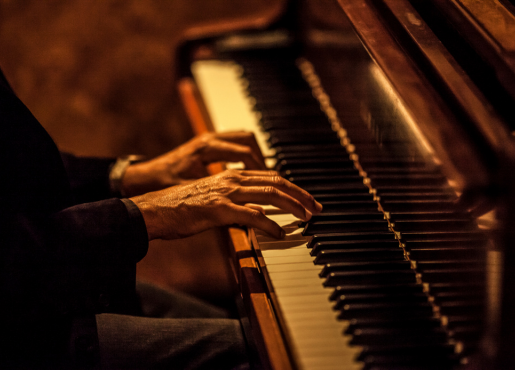
Honoring Jimmy Rowles
By Fritz Byers
I’ve been voting in the annual DownBeat Jazz Poll for nearly as long as I’ve been hosting Jazz Spectrum – 34 years. I just sent in my ballot for this year’s poll. DownBeat, as you probably know, has been covering the world of jazz since 1934. It has survived, better than most, the challenges of the evolving world of publications, communications, and commentary. The current state of jazz journalism is fodder for a post or two, so maybe we’ll get to that down the road. Regardless, DownBeat remains first among equals in the field.

I’m mentioning this now for a different reason. Every year, DownBeat publishes the results of annual surveys it conducts, separately among readers and critics, asking respondents to vote for the “best” in a wide range of categories: best jazz group, best vocalist, best historical release, and so on. One of the categories solicits votes for admission into the DownBeat Jazz Hall of Fame. The ballot comes with dozens of ready-to-check preprinted suggestions, always sensibly focused on the alarmingly large number of jazz luminaries who’ve not yet gained admission. (The roster of entrants is set forth; it’s entirely unobjectionable. Well, not entirely; that’s why I’m writing.)
If you don’t find a listing for the person you deem worthiest of inclusion, you can write in your vote. Every year I’ve voted, my write-in has been the same: the pianist Jimmy Rowles. He’s never been listed on the ballot, and I doubt he ever will be. I’d love to know if anyone else has ever voted for him.
Regardless, I stand by my votes. Jimmy has occupied an outsized place in my personal pantheon since summer 1977, when I first heard him at the lamented jazz treasure, Bradley’s in Greenwich Village. (Not coincidentally, Contributing Writer Kim Kleinman guided me there after scrounging through the then-plentiful jazz listings in the Village Voice; yes I’m dating both of us, so I’ll stop the nostalgia-flow.)
I knew next to nothing about jazz at the time, but I knew enough to be entranced by Jimmy’s style: the high-wire approach to floating tempos; the mix of styles that melded ragtime, stride, advanced harmonies, and precise single-note runs, somehow creating from his encyclopedic knowledge of jazz piano a sound utterly his own; and his gravelly untutored voice that found just the right inflections in a standard to bring its meaning home straight to the heart. He was legendary for his immediate-recall repertoire, which numbered into the thousands of tunes, many of them justifiably obscure until he revived them with his ingenious charm.
For the 45+ years since, I’ve been a fanboy. These blogposts are supposed to be morsels, edible snacks. But as they come to me, they keep threatening to turn into essays, or at least convince me that a fuller treatment is warranted. Jimmy deserves that and more. But for now, listen to these recordings:
- The Peacocks, nominally under the leadership of the tenor saxophonist Stan Getz, but designed by Stan to showcase Jimmy’s perpetually underappreciated genius. He had the marketing clout to pull it off, and Jimmy always said the release of the recording in 1977 dramatically changed the arc of his career. You can see that just by looking at his discography; sporadic recordings from 1954 till 1977, and then the flood. (I never got a straight answer from Jimmy as to why the cover of the album spells his name “Jimmie.”). With the bassist Buster Williams and the drummer Elvin Jones, you won’t find a better rhythm section. The title track, Jimmy’s composition, is among the most beautiful in all of jazz.
- Jimmy Rowles Plays Ellington and Billy Strayhorn. A program of lovingly curated tunes, done faithfully with immaculate skill but with wonderful idiosyncrasies. His piano reduction of Billy’s lament, “Blood Count,” is deeply touching.
- As Good as It Gets and Tasty, a pair of duet recordings with the stellar bassist Ray Brown. These recordings, which are brilliantly engineered, put you right in the room with these two masters. And you can feel – you certainly can hear – the empathy between them. Jimmy’s style is unto itself, so in some senses these recordings are an outlier in the piano-bass genre. But to my ears, they are an unmatched exemplar of it. They are available in a single set as The Duo Recordings.
- Home
- Schedules
- TV
- TV
- Local TV Programs
- Business | Life 360 with Kristi K.
- Toledo Stories
- To The Point with Doni Miller
- Listening with Keith Burris
- Ideas & Insights
- WGTE Presents
- BL360: Northwest Ohio Innovation Consortium
- Magic of the Old West End
- Freedom Means Never Surrender
- I&I: The Random Factor
- FF: National Cherry Festival
- TTP: Moms Demand Action For Gun Sense in America
- Watch Live
- Radio
- Education
- Community
- Support
- About
- Donate



